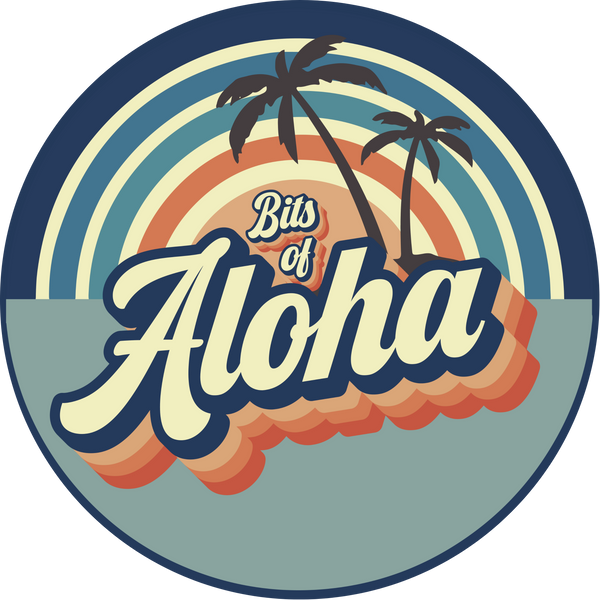
How Will the Nation’s New 2025 Tariffs Affect Merchants in Hawaii?
Share
Hawaii’s unique geographic location and cultural identity have always shaped its fashion scene—laid-back, locally inspired, and often handcrafted. But as new 2025 U.S. tariffs ripple across the retail industry, many island-based merchants are bracing for changes. With import costs rising and supply chains facing fresh pressure, Hawaii’s fashion retailers—from local boutiques to streetwear labels—are adapting in real time.
This article explores how the new tariffs are impacting Hawaii’s clothing and accessory businesses, what items could become more expensive, and how local creators are responding with innovation and resilience.
Understanding the 2025 Tariffs
In early 2025, the U.S. government implemented a new round of tariffs primarily targeting imports from China and Southeast Asia, which includes a wide range of goods—textiles, cotton products, plastics, and apparel among them. Many Hawaii merchants rely on these regions for affordable blanks (shirts, tanks, hats), materials (like rayon or bamboo), and manufacturing partnerships.
The tariff hikes, which range from 10% to 25% depending on the category, are already being felt across Hawaii’s small businesses, especially in the fashion and souvenir sectors that depend on volume inventory and seasonal tourism.
What This Means for Hawaii Fashion Retailers
1. Rising Costs on Basics
For local brands that sell popular staples like graphic tees and graphic tank tops, the biggest immediate challenge is cost. Many businesses import blank shirts in bulk, customizing them locally with prints, embroidery, or dyes. With tariffs now added on top of already high inter-island shipping rates, profit margins are being squeezed.
Expect some local prices to inch upward this year, particularly on entry-level items that were once easy impulse buys—$25 tees may now retail for $30 or more. The effect could ripple through Hawaii’s most popular categories: aloha shirts, Hawaii beachwear, and Hawaiian streetwear.
2. Challenges for Gift Shops and Tourism Retail
Shops catering to visitors—especially those selling Hawaii clothing gifts like shirts, pareos, beach bags, or accessories—may be hit hardest. Many of these stores rely on low-cost bulk imports to keep prices tourist-friendly. With tariffs, the cost of importing pre-printed aloha apparel, souvenir-style graphic tanks, or accessories like hats and bags is climbing.
Retailers in Waikīkī, Lahaina, and Kona are either passing those costs onto customers or trying to shift to alternative sourcing, which isn’t always available locally.
The Local Response: Resilience and Creativity
Hawaii’s small fashion labels have always been nimble, and 2025 is proving to be no different. Here’s how many are adapting:
1. Shift Toward Locally Made and Designed
Several designers are now prioritizing made-in-Hawaii products more than ever before. Whether it’s cutting and sewing aloha shirts on Oahu or hand-printing tees and tanks on Maui, the trend toward homegrown production is gaining steam. This not only insulates them from overseas tariffs but also taps into consumer demand for authenticity and sustainability.
Local favorites like Sig Zane, Aloha Modern, and Salty Wahine are leaning into storytelling, cultural patterns, and natural materials. These brands are creating premium-priced, limited-run collections that emphasize craftsmanship over mass production.
Search term tip: Hawaii clothing gifts, Hawaiian streetwear
2. Rethinking Materials and Supply Chains
To offset the impact of tariffs, some Hawaii merchants are experimenting with alternative materials. For instance, bamboo and hemp blends sourced from tariff-exempt countries are being considered for Hawaii beachwear and lightweight shirts. Others are partnering with U.S.-based textile mills to produce blanks or fabrics that won’t be tariffed when shipped to the islands.
This pivot could lead to a new wave of hybrid apparel—think aloha shirts made from mainland-milled cotton but printed and finished in Hawaii.
3. Smaller Runs, Higher Value
Gone are the days of deep inventory. In 2025, more local fashion companies are adopting the drop model—limited-run collections of graphic tees or tanks that create urgency and minimize unsold stock.
This scarcity model has proven successful with Hawaii’s emerging streetwear labels, particularly in youth-driven brands selling through Instagram and pop-ups. Shoppers are eager to support unique, island-centric fashion that won’t be found in chain stores.
Search term tip: graphic tees, graphic tank tops
Opportunities Hidden in the Shift
Despite the pressure, some Hawaii retailers are seeing this as a reset button—an opportunity to double down on values like sustainability, cultural relevance, and community.
Tourists, especially post-COVID, are more interested in meaningful purchases. Rather than mass-produced tees, they’re buying items that represent local art, heritage, and small-business values. This aligns perfectly with the Hawaii fashion ethos: style rooted in place, not just trend.
Merchants investing in storytelling, local artistry, and ethical production are not just surviving—they’re thriving. The challenge is pushing the entire industry to become more self-sufficient and globally distinct.
What Can Shoppers Expect?
If you're visiting the islands or shopping online for Hawaiian streetwear or Hawaii clothing gifts, you may notice:
-
Slightly higher prices, especially on basics
-
More locally made products, with a greater emphasis on design and materials
-
Limited edition releases that sell out quickly
-
Increased visibility of eco-conscious and small-batch fashion brands
Buying from Hawaii-based sellers also means your money stays in the islands—supporting jobs, preserving cultural expression, and keeping the aloha spirit alive through fashion.
Final Thoughts: Adapting the Island Way
The 2025 tariffs present a real hurdle, but Hawaii’s fashion scene is proving to be agile and inspired. For local merchants, the focus is shifting toward sustainability, creative resilience, and homegrown pride.
Whether it’s aloha shirts, graphic tees, or custom Hawaii beachwear, these aren’t just souvenirs—they’re pieces of an evolving culture that continues to thrive, one stitch at a time.
